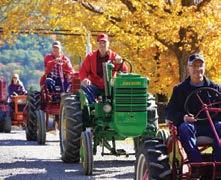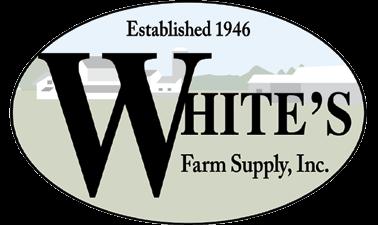


LAST CHANCE TO VIEW SPORTING FASHION


General Admission: $45 | Members: $35







General Admission: $45 | Members: $35



When Lance and I learned we were to be grandparents in 2021, I started dreaming of all the fun places we could take our little granddaughter someday. I was dreaming big. I didn’t realize how fulfilling the small things would be, like picking blueberries, feeding the koi in our little pond, and creek walks.


Creek walks are a bit of a joke in our family, because when my boys were young, on Mother’s Day, I got to pick whatever it was I wanted the family to do. “Creek walk!” they would guess, because that’s what I always chose.
When I was a kid growing up north of Camden, the creek that cut through our property provided endless entertainment for me and my sisters and cousins—seeing how long we could jump from rock to rock without getting our feet wet, damming up a section to make a swimming hole, rock skipping, searching for crayfish, and sitting under our own waterfall “jacuzzi.”
Last week I took my granddaughter on our first creek walk with her new little friend, Fiona. I was overwhelmed how much more vivid my memories of childhood adventures were to me as a grandmother than they were as a mother.

Perhaps nostalgia is like wine. •





On Sunday, July 16th, Deb Saltis, raptor rehabilitator at Falcon Heart Rescue, brought me two young American Kestrels intended for soft release at the nature sanctuary. One of them, a female with the fearsome name of “Sweet Pea”, had come to her the previous month as a downy chick. She had fallen out of her nest and could not be returned. Deb raised her from a nestling to an adult-sized immature with a full complement of flight feathers. The male had a similar origin story but was a little older when Deb received him. He came to me fully flighted, more independent, and not bonded with humans. My job would be to keep them in our sanctuary’s aviary for a day or two; enough time for them to acclimate to the sights and sounds of the habitat. The plan was then to release them. If they stayed, I



was to put out food for a few days, thereby supplementing their nutrition while they learned to hunt for themselves.



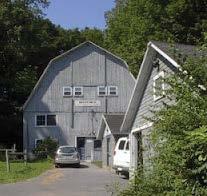




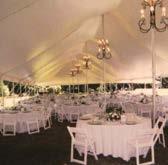




On Monday, I decided to release the Kestrels from the aviary. They had only been in there for a day but were not eating much. It was clear they needed to start catching their natural prey as soon as possible. At eleven o’clock on Monday morning, I opened the aviary door. Initially, the little raptors kept to their perches as they considered the implications of the open door. To my great surprise, an adult male Common Yellowthroat flew into the cage. What exactly he was thinking I couldn’t know, but it was the equivalent of a person trotting into a lion’s cage at feeding time. For several minutes, the falcons remained on their perches at the back of the aviary. They were both highly intrigued by the imprudent visitor now taking refuge beneath a small table at the front of the cage. The Yellowthroat realized his jeopardy and flew out of the aviary and into the safety of a nearby hedgerow.



Several minutes later, the female Kestrel made her move. She flew through the open door and made an awkward landing in a nearby locust tree. That was understandable, since flying outside the confines of a cage was new to her. However, then she proceeded to clamber up a branch in a manner more like a squirrel than a raptor. I was perplexed. She had been flying from perch to perch in the aviary, why was she behaving so differently here? It made me wonder if she was ready for prime time. I immediately considered my options. Should I recapture her?
At that point the male hadn’t yet left the cage and was still staring out the door from his back perch. Then, while I was distracted and trying to decide what to do about the first bird, the male Kestrel darted out. Although I couldn’t see him, I was able to track his progress across the sanctuary due to the moving wave of songbird alarm calls. He was headed north, and the resident pair of Kingbirds were chasing after him – as were a brace of Common Grackles. Although harassed,
it was clear the male Kestrel was flying well and seemed to know what he was doing.

My problem was the female. She was still struggling to get her footing in the low branches of a locust tree next to the aviary. At one point she was nearly in reach. I offered my arm for her to climb onto, but she scampered up to another branch instead. I had a net and considered using it on her, but just then she competently flew up to a higher branch. Virtually the entire time since she left the cage, she was looking at me and calling like a baby – “killy killy killy killy…”. I decided to leave the aviary door open in case she wanted to return for food or shelter.
When I checked on her later that afternoon, she was in the tree branches above the cage and still begging. I put some food in a dish on the roof of the structure and, after a few minutes, she flew over and had some. This was good news. If she stayed around, I would be able to supplement her food while she learned to hunt. At one point, she flew away from the aviary and headed west.
On Tuesday morning, I found Sweet Pea in the aviary. She was up in the same spruce where she took refuge the night before. I left to do some chores. When I returned in midmorning, she had moved to the top of a dead snag just south of the aviary. She started giving begging calls when she saw me – “killy killy killy…”. Calling the whole way, she flew directly to me and landed on top of my hat. I hadn’t expected that. Certainly, noone had ever trained her to do it. Indeed, this was all her idea. After a few seconds, she launched from my head and landed on a low snag. A butterfly
flew past her. She darted out, tried to grab it, missed, and returned to the same perch. Overall, she was doing well. Her flights and landings had become solid. She also seemed to be getting the idea to hunt. Now if she could refrain from landing on hats, she’d be set.



In midafternoon, the Kestrel stuck close to the grove of trees near the aviary. Whenever she would move to the north or to the west, Kingbirds, Grackles, and Jays would drive her back again. Before I left for the night, I saw that she was south of the aviary, flying from snag to snag. Hopefully, she was trying to get insects. The posse of defensive songbirds were leaving her alone. A storm came through late in the day, bringing gusty winds and rain. The Kestrel had never experienced inclement weather before, and I hoped she knew to take shelter.
The next morning, I located Sweet Pea quickly and she seemed fine. Once again, she was south of the aviary grove at the top of a dead tree. I put some food in a dish on the aviary roof for her, but she didn’t come to it right away. In midafternoon, I found her a few hundred feet south of the aviary, perched on a high snag. She was preening and no songbirds were scolding her. When she saw me, she began begging, but resisted the temptation to fly over and land on me. This was progress. For the Kestrel we had two major goals. The first and most important was for her to become independent –able to hunt and feed herself. The second goal was for her to become less trusting of people. Obviously, she couldn’t go through life landing on hats. I firmly
believed that once she was proficient at hunting, she would no longer have any use for people, and would stop associating them with food.

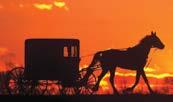


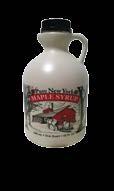


First thing Thursday morning, I didn’t see Sweet Pea anywhere. I walked around calling her like a dog, and she soon came gliding in. Once again, she was on the tall snag south of the aviary. And then, to my surprise, the male Kestrel I hadn’t seen since his release, dashed in and almost landed on top of his former cage mate. Where had he been all this time? As it happened, his visit was brief, and after a few minutes he flew off to the east and we didn’t see him again. He looked healthy, which meant he must

be successfully hunting. Clearly, he was enjoying his independence. Sweet Pea was a different story. She was giving volleys of begging calls once more. She then stretched out her wings one at a time, launched into the air, and made a beeline for my head. However, this time, before reaching me, she pulled up and flew to the roof of the aviary. I had put some food in the usual place, and she hopped over to her dish to have breakfast. Afterwards, she perched in a locust tree directly above the aviary. She looked around a lot, stretched a few times, but for the better part of an hour she did not try to catch anything.
In the early afternoon I found Sweet Pea quite quickly. In fact, before I saw her, I heard begging calls coming from the trees around the aviary. She almost immediately landed on my hat. She was still associating me with food and regarding me as her surrogate parent. From my hat, she flew to the ground several yards up the footpath. I thought this was encouraging. For a while I believed she was eating insects on the trail, but she was just moving around small sticks. When she was in the rehabilitation facility, she was getting crickets and mealworms on the floor of the cage. I think that’s what she was looking for in the path. She flew back to a locust tree branch, and from there, back to my hat, begging the whole time. I thought I would try something different. She had been afraid to venture beyond the aviary grove. I decided to walk her out on my hat and take her to an open area where she was more likely to see and perhaps catch grasshoppers. She stayed on my hat while I made my way to the meadow. I stood there looking ridiculous with a bird on my head for about twenty minutes, all the while pointing out large insects and offering words of encouragement.
On Friday, my coworker reported that Sweet Pea had followed him to Morton’s Pond. If this was true, it would be the furthest she had traveled from the aviary. Sure enough, she was there. She was perched at the top of a dead tree above the east bank of the pond. When she saw me, she started up her incessant begging. Five minutes later she flew over and landed on my hat. Fine. I decided to use it as an opportunity to show her insects in the meadow. With her riding along on my head, I quickly located a grasshopper. I couldn’t tell whether she saw it or not, but if she did, she wasn’t interested. She flew off my head and landed on a nearby Bluebird box. From there she flew over to the new observation shelter, still under construction. Sweet Pea first checked out the roof and then sat on one of the windows looking in. From there she dashed back to me, hovered over my






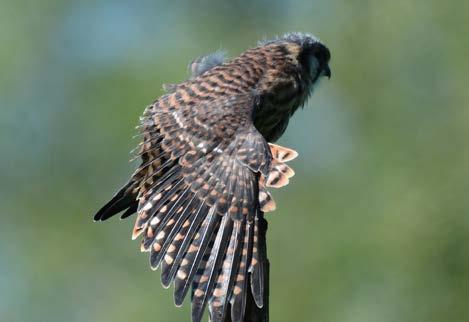


head for a few seconds, and then settled on my hat. With her on board, I started slowly walking towards the aviary grove, showing her insects along the way.






First thing Saturday morning, I didn’t see or hear Sweet Pea around the aviary grove. I put her food ration on the roof of the enclosure and set out to find her. It did not take me long. She was back on the dead snag at Morton’s Pond. Once again, she started calling when she saw me. I kept my distance, intent on studying her behavior. I wanted to see if she was hunting. There were lots of songbirds around, and none of them seemed concerned about the little raptor in their midst. In fact, there had been a marked change in the songbirds’ collective attitude towards the Kestrel. Only a few days before, the Kingbirds would not have left her alone especially if she ventured into the meadow away from the aviary grove, but on this day, they paid no attention to her. They realized she posed no real threat.






Despite my keeping a discrete distance, Sweet Pea reacted to my presence, first by giving begging calls and then by landing on my hat. I started heading back to the aviary grove. As I walked, she made a few forays off my hat and to the tops of nearby bushes and other high perches. She then amazed me by plucking a cicada out of the air while on the wing. This was the first time I had confirmed her taking prey. She flew with it to the top of a spindly tree. To keep balance, she held out her wings. The cicada dangled from her left foot. She then flew to the top of my hat where she consumed the entire insect save the wings. That was a first for me. I never had a raptor eat a meal on my head before. I walked back to the aviary grove. She launched from my hat and darted low over the path. As if on a zipline, she slid expertly between the bushes that knit over the trail. She then dashed by the bird feeder at the hedge, once again causing the small birds to scatter like struck bowling pins. On Sunday afternoon, I found Sweet Pea down at Morton’s Pond on the top of a birdhouse. She started begging when she saw me. She didn’t fly to me. Instead, she flew out to several other perches around the habitat, eventually settling on top of the observation shelter. There, she wiped her bill which made me wonder if she had caught and eaten an insect. As I was walking away, she flew over and landed on my hat. She needed her mobile command


perch once again.



I never had the compulsion to be a falconer; to train a raptor to perch on my arm, and to have it fly out after prey and return. I don’t think it’s an ethical pastime, since it involves taking a healthy raptor, subverting her instincts, depriving her of her independence, and doing it all for self-gratification. I still believe this, but my experience with Sweet Pea has given me an inkling of what a falconer experiences. Having a bird launch from your person, fly out, and then return to you is truly amazing. When she flies back to you – seeing her with wings fully extended, her eyes fixed on you, the full embodiment of grace, intent, and control, it is powerfully seductive.

On Monday morning Sweet Pea was down






at Morton’s Pond, perched on the roof of the shelter. She began calling when she saw me. She didn’t fly to me but instead landed on the Morton’s Pond sign and a few other perches around the pond in quick succession. She appeared quite animated. Several Jays were harassing her which, to her credit, was barely an annoyance to her. The blue-clad gang dove at her each time she moved. They followed her, swooped at her, all the while giving a variety of mimicked hawk cries and harsh warning calls. After landing on a snag, I noticed she was picking at something. She caught a cicada during one of her transits over the ponds. She gripped it in one foot and was nibbling on it. Sweet Pea watched me leave but didn’t follow me. However, as I walked through the field, she flew over and began begging in my face. She then hopped to my hat and rode me to the top of the field.


In the afternoon, I was unable to find Sweet Pea. I checked all her usual spots as well as some places where other Kestrels had frequented in the past, but I had no luck. The truth was, she had become proficient at hunting and no longer had need for a surrogate parent or a mobile command perch. In the following days and weeks, I kept my eyes open for her. I examined each Kestrel that came through the area, but I never saw her. Would she ever come back to the nature sanc-
tuary? Probably not. If she did, not only would she look different and be in full adult plumage, but she would be unlikely to pay any attention to me. Of course, for her own good, I hoped that would be the case. It was a wonderful experience having a close relationship with a healthy wild raptor, and one I am not likely to forget. •



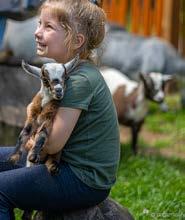





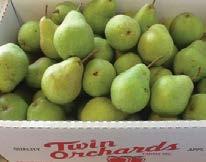
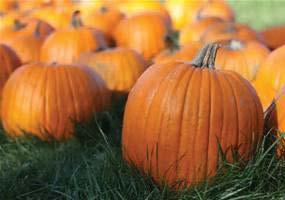





NEW SHIPMENTS ARRIVING!!!!! Lots of Alpaca Products! Including Fur Animals (Colored Alpacas, Unicorns, Lions & more), Fur Slippers, 3’ x 4’ Fur Rugs, Fur Pillows, Sweaters, Sport Bags, Andean Back Packs, Alpaca Socks & more.












If you can’t make it to our HUGE store, call and we can ship.




Alpaca is Softer than Cashmere and Smoother than Silk. Alpaca breathes better than any other Natural Fiber, and is “Naturally” Water & Odor Resistant. Your feet will be more comfortable, drier, and less fatigued. PLUS, Alpaca is Hypo-Allergenic & Highly Anti-Microbial.


































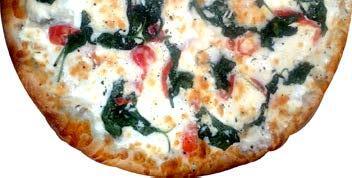










































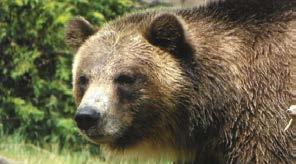



































September can be a fascinating time to be in nature. Bird migration is in full swing. Many trees and bushes are laden with fruit, seeds, and nuts. Asters and goldenrods are in full bloom, and they paint the fallow fields and meadows in wide swaths of yellow, white, and pink. Monarch butterflies and Green Darner dragonflies are passing through the meadows; the butterflies gorging on nectar, and the dragonflies, on smaller flying insects attracted to the nectar. Both species are on route to their own respective destinations in the south.
Traveling in the airspace above them are small flocks of Bobolinks. They spent the summer nesting in hayfields–both locally, and in the Canadian provinces. They issue bright call notes as they traverse the sky–bound for the farm fields of the Deep South. There they are sometimes referred to as “rice birds” and are maligned for their consumption of rice and other grain crops. In spring and early summer, the male Bobolink has particularly distinctive plumage. The front half of his body is uniform black, while his back half, including wings, show a bold pattern of black and white. The back of his head is cream-colored, which to me always conjures up the image of a British judge with his/her omnipresent wig. In September, departing male Bobolinks molt into plumage resembling that of the female –although more buff colored. It is a dramatic
transformation.
In September, we bid farewell to most of the neotropical songbirds – the woodland thrushes, warblers, vireos, flycatchers, cuckoos, tanagers, and grosbeaks. Many of which we hadn’t seen in the valley since they passed through when northbound in May. Now they are returning from the Adirondacks and from the boreal forests of eastern Canada. Wildfires affecting the eastern provinces in the late spring and early summer likely adversely affected their breeding season, and they will make the return trip with weaker numbers. Their already troubled conservation status makes them more precious and each sight of them more coveted.

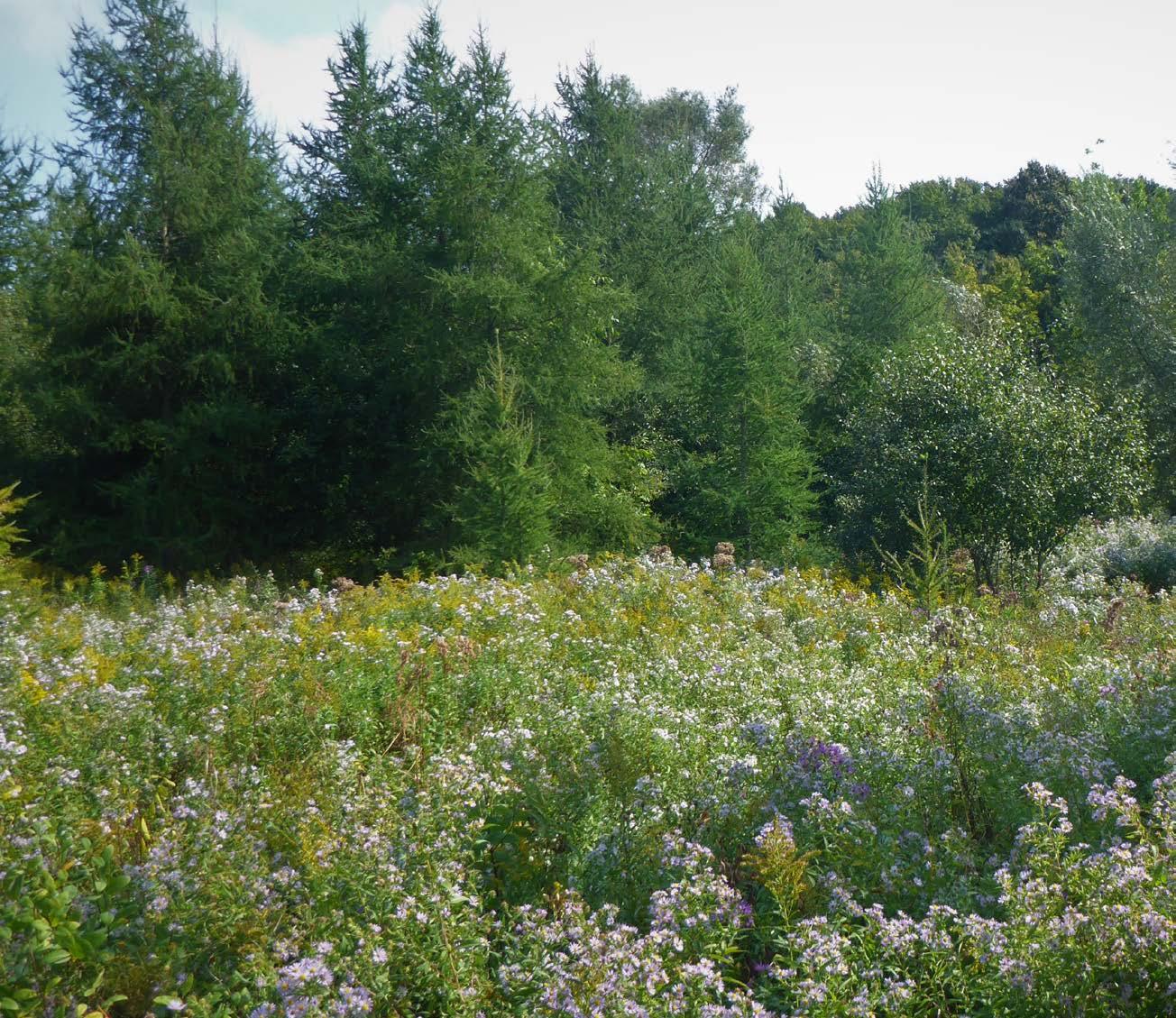
Fall warblers like fall sandpipers can be challenging to unscramble and identify, but it is eminently possible. Cryptic fall plumages contrast greatly with the species’ bright breeding season attire. The fiery, orange hue of the adult male Blackburnian Warbler’s throat patch becomes toned down to a somber yellow-brown. Other species like the Northern Parula and the Cape May Warbler also have the bright highlights of their colorful spring plumage toned down for fall. Even with duller plumage, the warblers are still beautiful, and they and their fellow neotropicals provide us with worthy identification challenges. A species endowed with the most
vividly colored plumage, the Scarlet Tanager, goes through a particularly dramatic plumage molt. The scarlet body plumage of the male tanager defoliates in patches, revealing a fresh under layer of yellow plumage. In September, it is possible to see a tanager transitioning between plumages – showing patches of yellow and scarlet interspersed over his body. It is an appropriate look for fall as it matches the patchy red and yellow of the changing leaves. Assessing the wild fruit/nut/seed crop is something I like to do each summer. It gives me an idea of what food resources will be available for the birds and other animals in the coming fall and winter. The combined output of nuts and seeds in a forest ecosystem is referred to as “mast”. The amount of mast can vary dramatically from year to year. Some years, nut producers of certain species will synchronize their output and produce bumper crops. In this scenario, the strategy of the trees is to flood the market and overwhelm the consumers of their produce. This ensures that at least some of their seeds will survive to ger-
Bob Meelan is retiring & Meelan's Market is closing its doors after 77 years!
Last day: Sat., Sept. 2nd Labor Day weekend. Stop in and say goodbye!



minate. Looking around the nature preserve’s forest, I see little sign the trees synchronized their output this season. However, notably, the White Pines of our reforestation fields produced their largest crop of cones yet. As the oldest trees in the plantings reach 23 years, this is more a reflection of the trees’ maturity than an indication of synchronization. However, our White Spruce planting, which is approximately the same age as the White Pines, shows signs of synchronous output – and most of the individual trees are loaded with cones. This is good news for the consumers of spruce seeds which are many, including several species of finch and squirrel.
Fruit production around the sanctuary is better than moderate this year. Black Cherry, American Mountain Ash, Black Elderberry, Silky Dogwood, and Nannyberry all produced a great amount of fruit. Apple, Hawthorn, and Wild Grape produced a moderate amount. There are many fruit-eating songbirds that will take full advantage of the output of these trees, and with luck it will be enough to help fuel the migration of many and still provide a comfortable season for winter residents.
In September, most wildlife and plants are putting on a grand finale. Whether you are interested in birds, wild plants, trees, or virtually anything else in nature, it’s a fabulous time to be outside and observing. My advice to all interested is to find some promising habitat and feast your eyes on the happenings. •








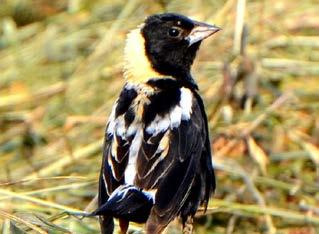





menu with specials. Fridays you can find a Fish Fry and Saturday is Prime Rib. All entrees are served with soup or salad, two sides, and a nice warm crusty loaf of bread.


Wood prefers to do most of the cooking himself. “I’m a hands-on person,” he said, “I buy fresh chicken breasts, trim, pound, filet, and marinate every one. It’s more expensive and time consuming, but it’s a much better product.”
Daniel Rosinski (WC ‘58) interrupted Wood’s dialogue and said, “Did you tell her about the time I was in the Men’s Room and couldn’t get out?” Wood responded, “Yeah, your wife told me to lock you in there!” In unison, a robust guffaw ensued.


When the chuckling ceased, Wood discussed Castlewood’s future plans: obtaining a beer and wine license and Sunday Brunch Buffets every first Sunday of the month starting in October.
“What works for us is good portions, fair prices, high quality, consistent food,” Wood says. Come see for yourself at Castlewood Cafe! •


1307 Champlin Ave., Utica

Open: Mon: 8am-2pm, Tues-Thurs: 8am-8pm, Fri: 8am-9pm, Sat: 8am-8pm, Sun: 8am-3pm castlewoodcafeny.com







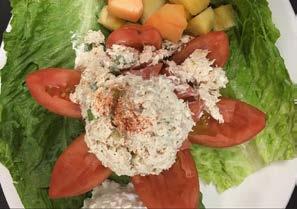
Maryann Vanderpool-Imundo is a poet and freelance creative writer. She is an active member in the Oneida Chapter National Society of The Daughters of the American Revolution (DAR). She enjoys history, writing, public speaking, ballroom dancing and line dancing.









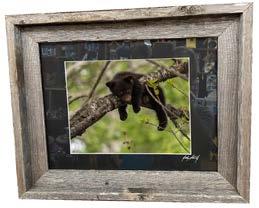








The influence of female athletes on fashion from 1960 to present will be the focus of a dynamic event at Munson in downtown Utica.



Fierce Fashionistas: A Fashion Show and So Much More will bring a fashion show and cocktail event from 7 to 10 p.m. on Thursday, Sept. 14 at the Munson Museum of Art. Beyond the runway featuring highlighted ensembles from local vintage store Thrift”ish,” there will be dance, acrobat and yogi performances throughout the evening.
Thrift“ish” owner Carlene Mahanna and Yoga Shala’s Man Hue Duong will guest host the event in the Museum’s Root Court. Attendees are encouraged to dress in their most creative athleisure or sportswear look for the chance to walk the runway and win a door prize.
Fierce Fashionistas kicks off with a cocktail hour at 7 p.m. with acro-yogi performances. It will be an opportunity for attendees to visit the Sporting Fashion: Outdoor Girls 1800-1960 exhibition on display at Munson, open through September 17.


The fashion show to follow is the event centerpiece, but there will also be performances by U.S. Champion and twotime Pan American Champion in Rhythmic Gymnastics

Olga Karmansky and students from Dance Works Studio. Those seeking the complete experience can purchase VIP tickets, which include an exclusive 6 p.m. dinner at the Terrace Café in Fountain Elms and front row seats to the fashion show.

Answers found in the pages of this magazine! Solution will appear in next month’s issue
Across
3. An exciting new luncheonette just opened in Herkimer! See pages 14 & 18.
5. Check out the Harvest Festival Sept. 16 & 17 at this museum. See page 47 .
7. This spacecraft is returning precious cargo to Earth on September 24th! ___-REx
10. MV Restaurants article this month features this popular cafe in Utica.
12. Once lined Utica’s Genesee Street.
13. These summer visitors to the Mohawk Valley are sometimes referred to as “rice birds.”
15. Not odd.
16. Fort Schuyler is now known as Fort ___. Down
1. This breed of small falcon landed on Matt Perry’s head.
2. Munson is Sporting ___.
4. MV Girl visits ___ & Dragons in Little Falls.
6. A couple articles feature these forest delights that have caps and gills.
8. This popular cafe is located in downtown Utica in the ADK Bank building. See page 14.


9. This antique shop in Little Falls showcases antiques.
11. Not an oddity.
13. ___ of Utica started in downtown Utica in 1927.
14. Hey, ___!

MVL Crossword Puzzler:

Whatyou’llhaveifyoushopforfalldecorationsatJuliano’s,D’Allesandro’sNursery,Candella’s, NorthStarOrchards,CackleberryCastle,Cullen’sPummpkinFarm,orPumpkinJunction?
















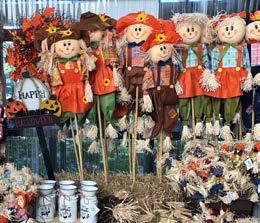




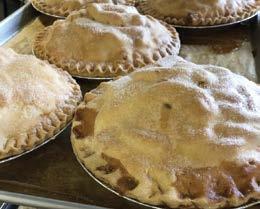




good at strategy!
The day I was there they were having a sit and color event, with some lovely pictures and a variety of colored pencils laid out. I personally have a hard time staying in the lines. It was a free event, but they ask for a one dollar donation if possible to help cover costs. Likewise, it is free to sit and play a board game. They originally charged a fee but realized they did not want to shut anybody out.
They hold regular D&D sessions. Most people play every week or at least regularly in a long running campaign. One game is about to hit the one-year mark and they still have a bit to go to finish the story. All D&D games are currently full with a waitlist for all of them. So, I will have to get on a list and wait to be one of the really cool kids!


They occasionally hold “one off” games, posting on FB or advertise for those. For people who want to get started, they will walk people through making a character and the basic mechanics.


“But really the best way to learn is to play the game,” Katie said. “We also have some beginner friendly sheets and books we designed as handouts. We will often hand out to new players for games they might play at home. As long as my printer is working for me,” she added with a laugh. •
25 W. Mill St., Canal Place, Little Falls













315-508-5001



September 24 will be a day filled with high anxiety and drama. At approximately 10:41 a.m., a spacecraft that traveled to the Asteroid Belt between Mars and Jupiter is scheduled to fly past Earth and release a capsule that will land 14-minutes later in the Utah desert. What’s so special about the capsule? It carries rare and precious cargo – surface material from an ancient asteroid that will provide information about the early solar system. Meet NASA’s OSIRIS-REx mission!
OSIRIS-REx is an acronym for Origins Spectral Interpretation Resource Identification Security - Regolith Explorer. The spacecraft launched September 6, 2016 to asteroid Bennu. Its goals included mapping and imaging the surface, determining Bennu’s chemical and mineral composition, topography and temperature, collecting surface samples and returning them to Earth.
Scientists believe Bennu took shape during an era when our solar system was forming about 4.6 billion years ago. It is a carbonaceous asteroid, rich in carbon and organic molecules that are some of the building blocks for life. The Asteroid Belt is estimated to be home to almost two million asteroids, so how and why choose Bennu? Mission planners defined specific attributes that an asteroid must meet in order to be selected as the prime target.
First, its orbit must take it near our planet with the potential for impacting Earth in the future. Known as a nearEarth objects (NEO), the search immedi-
ately narrowed because out of over 7,000 NEO’s known at the time, only 192 could easily be reached by a spacecraft. Next, the team looked for asteroids larger than 656 feet across. They spin slower than smaller ones, allowing a spacecraft to safely contact the surface during sample collection operations. The count went from 192 to only 26. And finally, primitive asteroids that are carbon-rich reduced the number of candidates from 26 to 5. Bennu was one of the five finalists and the ideal match.

OSIRIS-REx has three cameras, a laser altimeter to measure and map the surface, thermal spectrometer for mineral and temperature data, visible and infrared spectrometer to identify minerals and organics, and x-ray spectrometer to identify elements. But the primary instrument is the Touch-and-Go Sample Acquisition Mechanism (TAGSAM), used to literally touch the surface and collect samples. It is an 11-foot long articulating arm with a round, 12-inch wide collector head at the end for storage of surface material. That collector head is currently safely stowed inside of the Sample Return Capsule on its way to Earth.
The spacecraft reached Bennu on December 3, 2018, and the mission team soon learned they had several big surprises in store. First images showed bits of rocks being ejected into space, but the team later determined they were not a hazard for the spacecraft. Next, the smooth surface with pebbles and a few boulders they expected
wasn’t what they found. Bennu is rugged and covered with boulders – some the size of a house – making the TAGSAM team completely rethink their sampling strategy. But after carefully searching for and finally finding a suitable site, the biggest shock resulted from TAGSAM’s October 20, 2020 highly successful effort to collect sample material. Instead of a firm surface, the collector head sunk almost 19-inches below the weak surface which a NASA project scientist later compared to “a children’s ball pit or freshly fallen snow”.

In a few weeks we’ll learn the result of the daring sample return efforts. A recovery team will collect the capsule and quickly transport its cargo to a Johnson Space Center laboratory. There, a curation team will preserve the sample material in preparation for the start of a 2-year evaluation period. For mission updates, visit the www.nasa.gov/osiris-rex website.
Wishing you clear skies! •













Last chance to see this exhibit! Ends Sept 17, 2023

The first exhibition to explore the evolution of women’s sporting fashion over this 160-year period. The exhibition includes 65 ensembles comprised of more than 480 historic objects.
Munson
310 Genesee St., Utica, NY (315) 797-0000 munson.art


Through October 1, 2023
This major national exhibition showcases outstanding artistic talent, skill, and beauty a range of water media.
View
3273 Rt. 28, Old Forge, NY (315) 369-6411 viewarts.org
InTheBlood:PeterLeoneMetalSculptures
September 8 – October 7, 2023
Reception September 8, 5-7pm
Artist Talk September 30, 1pm


The Other Side

2011 Genesee St., Utica, NY
www.theothersideutica.org
Hours: Thurs: 12-3pm, Sat: 12-3pm or by appointment


As a farmer’s market vendor AND mother of two adventurous girls, I have long encouraged my daughters to shop with fellow vendors. In between customers, we often plan our dinners for the week and include the freshest produce from our favorite farmers.





Harper, my eldest daughter, quickly became a huge fan of Fruit of the Fungi, grower and purveyor of fresh and dried mushrooms. She would always advocate for a mushroom-centric meal (mushroom risotto is a family favorite, as is beef bourguignon) and happily slip over to their booth at either the Clinton Farmer’s Market during the summer or the Oneida County Public Winter Market.

Left entirely to her own devices, she would return with the most amazing-looking specimens: furry Lion’s Mane, commanding King Trumpet, sturdy Shiitake, adorable Piopinno and Brown Beech, or mysterious Oyster and Maitake. Who knew there were so many types of mushrooms? I was only familiar with your typical grocery store selections—white and brown. We were in for a real treat!
Fruit of the Fungi, based in Lebanon, New York, is run by KC and Kristi Mangine. KC’s parents, Ken and Bev, set up at local markets and distribute throughout the greater Utica area. KC and Kristi can be found at the Syracuse Regional Market year-round and often partner with local CSA programs to provide mushrooms. All of their dried products are available at ny-



The History Center gets many visitors interested in researching a particular topic or family name. How do they go about researching and what might they find in our Tharratt Gilbert Best Library? Let’s give you an example. We’ll take a name heard often around Utica: Schuyler.

An important first look would be the Family Information File (FIF). This consists of hundreds of files organized alphabetically by last name. The Schuyler folder includes items typical to many of the files: recent obituaries, family trees provided by previous researchers, and excerpts from articles on the various family members. If you are a genealogist, challenges are immediately made apparent due to multiple people with the same name. Birth and death dates are important to help you differentiate between family members.
In the same area as the FIF are the Historical Information Files (HIF). There are 20 drawers filled with folders with immense amounts of information. A Fort Schuyler folder has multiple articles on the fort and the original settlement along the Mohawk River that became Utica. We learn quickly that the colonial fort was established in 1758 as a chain of defense along the Oswego-Mohawk River route during the French and Indian War. It was named for Peter Schuyler, a colonel in the militia and the first mayor of Albany, NY. It became known as Old Fort Schuyler during the Revolutionary War when Fort Stanwix was named Fort Schuyler after General Philip Schuyler. Another HIF folder is on the Fort Schuyler Club, founded as a “gentlemen’s club” in 1883, and named after the aforementioned Fort Schuyler settlement. It found its permanent home in the former Hoyt house, and it became the first building with electrical wiring in the city.
“Finding Aids,” the internal computer database, leads us to many different areas of the collection. This provides access to books, pamphlets, scrapbooks, manuscripts, maps, and photos. The results are too numerous to fully list.

A search reveals multiple books on Old Fort Schuyler, Philip Schuyler, and the Town of Schuyler. One book tells us that Schuyler St., Utica was named after Gen. Philip Seymour of the Revolutionary War and that Hamilton St. was named after his daughter Eliza Schuyler, who



married Alexander Hamilton.

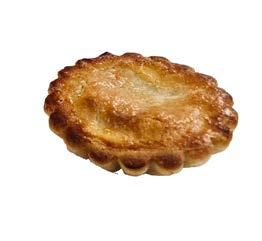
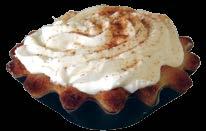


Our collection of manuscripts is vast and references to the Schuyler name are many. Just to name a couple: we have a box of [General]





Philip Schuyler Papers from 1785-1832. Among the papers are a division book of Schuyler’s land in Cosby’s Manor (parcels of land around Utica) and a map of lots in Utica belonging to the Philip Schuyler estate. There is a store ledger of John Post, Old Fort Schuyler, from 1795 to 1800. This ledger is one of the earliest dealing with the settlement. This ledger is remarkable in that in 1804, a fire broke in John Post’s store destroying everything except for a part of the books and a little silver money.
There are hundreds of digital photos found at the History Center. In this collection, a drawing of Old Fort Schuyler and an early portrait of Philip Schuyler are among the images one could find.



Remember the Schuyler sisters? Besides Angelica, Eliza, and Peggy, there was the youngest sister, Catharine, who lived for a time in Utica with her husband Samuel Malcolm. The collection includes a photo of their house on Genesee Street.




All of the above-mentioned resources, plus many others, are available for you to study the topic of your choice at the History Center. A friendly staff member, such as myself, or a volunteer is available to help guide your research too. Call 315-735-3642 to make your appointment and start your journey into local history. •


for. That is when lake surfaces are likely calm, precisely reflecting the shorelines. And speaking of the shorelines, that is where leaves and pines needles often gather in clusters, sometimes in foam, providing so many possible compositions. Carol turned a shot from one in a series taken along the shore of Moss Lake in Inlet into a watercolor painting.

Autumn can be known for rain – but that is not a bad thing! Colors become so deeply saturated and seem to glow under overcast skies.


The elements creating rushing water in streams and rivers add a sense of motion – excitement to an image. There are also pockets of standing water along stream banks and trapped on the surface of rough boulders hosting pools of orange or plum or canary yellow and maybe a deep sky blue from a deep blue sky. For autumn color information for the Adirondacks: visitadirondacks.com/fall •
On Tuesday, September 19, watch for Gary & Justin VanRiper on Bridge Street, WSYR-TV Channel 9, Syracuse, talking about Adirondack Kids Day, the annual family event that is always the first Saturday of October in Inlet, NY.







 by Peggy Spencer Behrendt
by Peggy Spencer Behrendt
1175 Hillsboro Road, Camden • 245-0104 • www.cackleberrycastle.com


1175 Hillsboro Rd 245-0104 www.cackleberrycastle.com
OPENING FRIDAY, SEPT. 15TH
OPENING: THURS. SEPT. 17TH 4pm
HOURS: Thursday & Friday: 4-9 Saturday: 10-9 Sunday: 10-8
NEW HOURS: THUR’S & Fri’S 4-9 SAT’S 10-9 SUN’S 10-8
COLUMBUS DAY 10-8
COLUMBUS DAY 10-8
RESERVATIONS ACCEPTED FOR FIELD TRIPS/BUS TOURS FOR THURDAYS & FRIDAYS: 10-4
RESERVATIONS ACCEPTED FOR FIELD TRIPS/BUS TOURS FOR FRI’S 10 -4
FREE ADMISSION & FREE PARKING
FREE ADMISSION & FREE PARKING
HAYRIDES, BOUNCE HOUSE, MS. PUMPKIN, ANIMALS, KIDS PLAY AREA, PUMPKINS, SQUASH, APPLES, CIDER, CORN STALKS, GOURDS, CONCESSION STAND, FUDGE HOUSE, POPCORN PALACE, HALLOWEEN DISPLAYS, TOTEM POLES & NOVELTY ITEMS

NEW THIS YEAR: “SPOOK WALK” a Family Friendly trail thru our Cornfield
HAYRIDES, BOUNCE HOUSE, MS. PUMPKIN, ANIMALS, KIDS PLAY AREA, PUMPKINS, SQUASH, APPLES, CIDER, CORN STALKS, GOURDS, CONCESSION STAND, FUDGE HOUSE, SPOOKY WALK THROUGH CORNFIELD, POPCORN PALACE, HALLOWEEN DISPLAYS, TOTEM POLES & NOVELTY ITEMS
Live Music under Pavillion, check our facebook for events!
COSTUME PARADE & CONTEST: Saturday Oct. 24th @ NOON, everyone gets a goody bag, prizes for best costume, kids only

In 1974, Tim and Peggy Spencer Behrendt set off on an adventure. They began a new life in the woods of Cold Brook, NY, without modern conveniences like electricity or indoor plumbing. These are excerpts and reflections from Peggy’s journal chronicling their adventures and also her childhood memories growing up in Westmoreland.



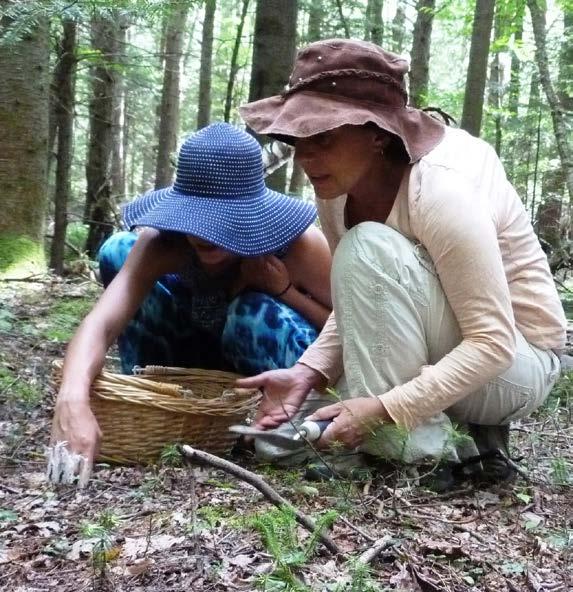
September is a beautiful, busy, and exciting time for us, with many enjoyable and meaningful things to do. The Autumnal Equinox marks the sun’s crossing above Earth’s equator, moving from north to south, a point of balance between the seasons of growth and harvest.

Tim and I become “Connoisseurs de Pommes” (I just made that up!) and bike around tasting all the local wild apple trees until we find our favorites, then tote them home in bike baskets or backpacks to store in our root cellar. It’s an interesting experience because every tree has genetically different fruit being the result of cross-pollination, so each one has unique qualities of taste and texture. You can get a sense of this experience if you visit one of our wonderful local orchards like the Clinton Cider Mill, North Star, or our historic Twin Orchards. Make a point of tasting all the different varieties. Then you, too, can call yourself a Connoisseur de Pomme.
Tim climbs a favorite tree and shakes it
while I gather them off the ground. One time the tree shaking attract ed the attention of our neighbor’s free-ranging cows who, hear ing the rustling and thudding of falling apples raced towards us, excited at the prospect of a fruit feast. As we were in an area of dense shrubs, grasses, and trees, we hadn’t realized they were nearby. From his high perch, Tim saw them coming and yelled down to me, “Peg look out!” I covered my head, expecting a new avalanche of apples to fall. He clarified: “Look out for the cows!” And I peeked out from under my arms at the sight of several black and white behemoths (well over a thousand pounds each) trotting from the bushes toward me. I never climbed a tree so fast in my life!
Consequently, we ate quite a few apples while sitting in tree branches waiting for the cows to satiate themselves and move on.






Another big harvest for us is another pomme, the “Pomme d’Amour” (French for love-apple) or tomatoes. This is the


as it’s safe, quick, easy, and such a delicious and economical addition to our meals for the rest of the year! I chop them into pieces (skins, flesh, seeds and all), and add chopped green peppers, onions, garlic, and

fresh herbs.
A big objective for us, when we began our homestead at Shawangunk, was to become as self-sufficient as possible on a vegetarian diet. Until we knew what we could grow in the garden we were carving out of the woods, we thought we should focus on learning about wild plants.


It took some careful budgeting to be able to afford our first couple of books on wild, edible foods. It’s fun, but scary to identify and eat a wild plant for the first time. We’ve tried cattail roots, cowslip buds, milkweed shoots, wood sorrel, and many others I’ve forgotten about. I surmised from the recipes in Euell Gibbon’s books on wild edibles, pretty much anything wild will taste good if you cook it in butter, but our all-time family favorite was what I called, “Kentucky Fried Milkweed.” Young milkweed shoots and buds are first boiled in water and then the water is discarded. The plant parts are then dipped in scrambled egg and milk, rolled in flour and salt, and fried.
I read that chokecherry berries were edible, despite their name, so tried them out one year. They aren’t too bad, almost nice
to eat, but not quite. They are a little dry and astringent, and I think it’s best to just eat a few. I canned some chokecherry juice too, but don’t think we used it all, and I’d only eat them now if desperate. A farmer friend said that he would nibble on them if he was working far from home and felt thirsty.
I became interested in mushrooming when we noticed the wide variety of shapes, colors, and sizes growing in our new home in the forest. They seem to just pop up overnight in unpredictable places. We were eventually able to afford a really good book on mushrooms and I learned that to make a positive identification one should take a spore print. This means setting the mushroom cap on a piece of paper that’s half-dark and half-light and leaving it overnight. The next day, the spores will have dropped onto the paper showing up on whichever color contrasts the best. This is a fascinating process, but by the time you’ve taken the spore print, it’s too late to eat the mushroom, and I never felt motivated to follow through.
One year a very pleasant widower in one of our churches invited us to his home for lunch after church as he was excited to share a particularly large puffball mushroom he’d harvested that morning. We were also interested in seeing the new house he had built
when his old one tragically burned down. It was avant-garde because it was one of the first modern home constructions that took advantage of passive solar energy (1975). The mushroom had a lovely creamy texture and was at its peak plumage. He gently sliced thick slabs and placed them in an amply buttered saucepan to sauté on the cookstove. As he enthusiastically chatted about the house, mycology, and current affairs, he led us to a sitting area at the far end of the room and seemed to completely forget about it, but I didn’t! I nervously watched it get smokier and smokier before I decided I’d better get up and turn the heat off our neglected delicacy which had long passed the golden-brown stage. As we were vegetarians and the only other options were hamburgers and hotdogs, the meal was disappointing.

Mushrooms are truly fascinating, magical entities. In our forest, we’ve seen bright red, bright orange, and bright yellow mushrooms; mushrooms that glow in the dark; ghostly Indian Pipes (which are not mushrooms, but parasitic herbaceous perennials that do not contain chlorophyll); Amanita Muscaria (which was historically used as a psychedelic by shamans, but also considered a toxin); almost rock-hard polypores on trees with a surface that you can draw pictures on; …an endless list.
Only 53 years ago, a new bio logical Kingdom came to be accepted by science, which recognizes Fungi (mushrooms) as a distinctively separate category from Plants, Animals, Protista (or ganisms not deemed to be animals, plants, or fungi), and Monera (sin gle-cell things with no defined nucleus such as bacteria).



White Indian Pipe are parasitic herbaceous perennials

Fungi are the subject of a fascinating book by Mer lin Sheldrake called “Entan gled Life”. The implications of our emerging knowledge of this biological kingdom are enormous. Reading this book has made us realize that mushrooms are not simply pretty plants, food delicacies, or mind-altering substances. Fungi may be the glue that supports and sustains all life on our planet and may be the key to saving it from the enormous ecological mistakes of humankind.
For instance, Sheldrake writes that mycorrhizal fungi increase the volume










of water that the soil can absorb, reducing the quantity of nutrients leached out of the soil by rainfall by as much as fifty percent. Research has discovered and isolated potent fungal strains that can be used to detoxify certain industrial pollutants found in polluted soils and fuel spills.


Fungi may be used to build things as well as to detoxi-
fy pollution. In nearby Albany a company called “Ecovative” is researching and producing “sustainable, biodegradable packaging (grown out of fungi) to directly displace plastic pollution”. They are also developing and producing “high-performance mycelium materials (faux leather) for fashion, footwear, apparel, automotive…” as well as wholesome alternatives to meat.

Fungi are now being used to make boards, bricks, acoustic tiles, and molded packaging. Chairs may be covered with mycelium leather and padded with mycelium foam. Some companies are shipping their products in biodegradable fungi packaging and these fungal strains are grown (fed) with agricultural waste such as sawdust or corn stalks.
Mushroom/mycelium growth is ubiquitously present in what we consider “healthy” or life-sustaining soil. But many modern farming and gardening methods don’t encourage this.
Sheldrake writes, “Besides the hundreds or thousands of meters of fungal mycelium in a teaspoon of healthy soil, here are more bacteria, protists, insects, and arthropods than the number of humans who have ever lived on



As long as I can remember, my vision of the Universe is that it is infinitely large, infinitely small, and eternal. I simply can’t grasp the concept of a limit because a limit defines a separation between something and nothing. How can there be nothing?
It’s interesting to realize that we humans are still recognizing and learning about smaller and smaller units of life as developments in technology and research allow.
There are countless, tiny things growing, emerging, decaying, and invisibly flowing deep within the earth, and we can only imagine the eternity of substance that lies beyond the earth’s delicate and fragile atmosphere. Let us be gentle with our planet, kind to its inhabitants, and keep exploring, learning about, and protecting the fantastic plethora of life forms that abound here. •
The Shawangunk Nature Preserve is a deep ecology, forever wild, 501©(3), learning and cultural center. Tim and Peggy still live there and can be contacted through their website.Keeping Mohawk Valley Living on the road for years!


Steet Toyota Yorkville (315) 736-8241


Steet-Ponte Mazda Yorkville (315) 927-5081
Steet-Ponte Chevrolet Herkimer (315) 866-5080



Steet-Ponte Ford Lincoln Yorkville (315) 736-3381
Steet Toyota of Johnstown Johnstown (518) 762-7222
Steet-Ponte Volkswagen Yorkville (315) 736-8291

United Auto Sales Yorkville (315) 736-3361

Steet-Ponte Nissan Yorkville (315) 864-7500 R


www.steetponteautogroup.com

Celebrate the art of Arnold Lobel (1933–1987), author and illustrator of some of the most beloved children’s books produced since the late 1960s, including his popular Frog and Toad series.
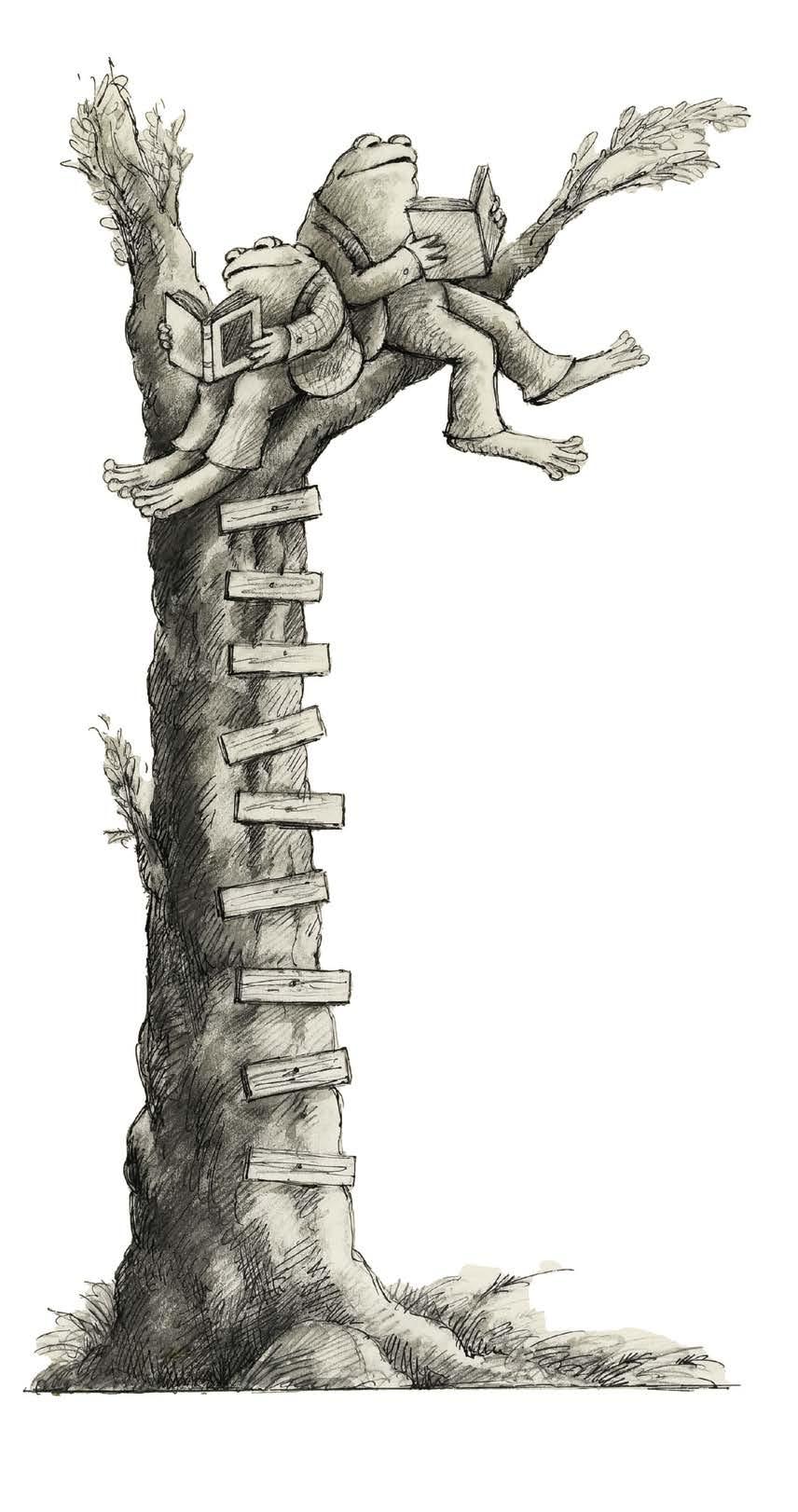
A MUSICAL PRODUCTION OF A YEAR WITH FROG AND TOAD
SATURDAY & SUNDAY MATINEES
Sept 9, 10, 16, 17, 23, 24 • 1:00PM
In our lakeside amphitheater Get tickets online!
Nature Composed: Paintings and Tapestries by Adrianne Lobel
September 23 – December 31, 2023 (see website for related programs)
A Cabinet of Curious Matters: Work by Callahan and Whitten
September 16 – December 31, 2023
James Edward Deeds: Drawn from the Asylum
September 2 – December 31, 2023
Randy Johnson: Storytelling with Photographs
April 1 – December 3, 2023
HOURS: DAILY 10-5 OCT 10-DEC 31: TUE-SUN, 10-4 (Closed Thanksgiving and Christmas)
5798 ROUTE 80 | COOPERSTOWN, NY
FENIMOREART.ORG
 The Fenimore Art Museum gratefully acknowledges The Eric Carle Museum of Picture Book Art for their loan assistance. Sponsored in part by The Clark Foundation and NYCM Insurance.
The Fenimore Art Museum gratefully acknowledges The Eric Carle Museum of Picture Book Art for their loan assistance. Sponsored in part by The Clark Foundation and NYCM Insurance.





